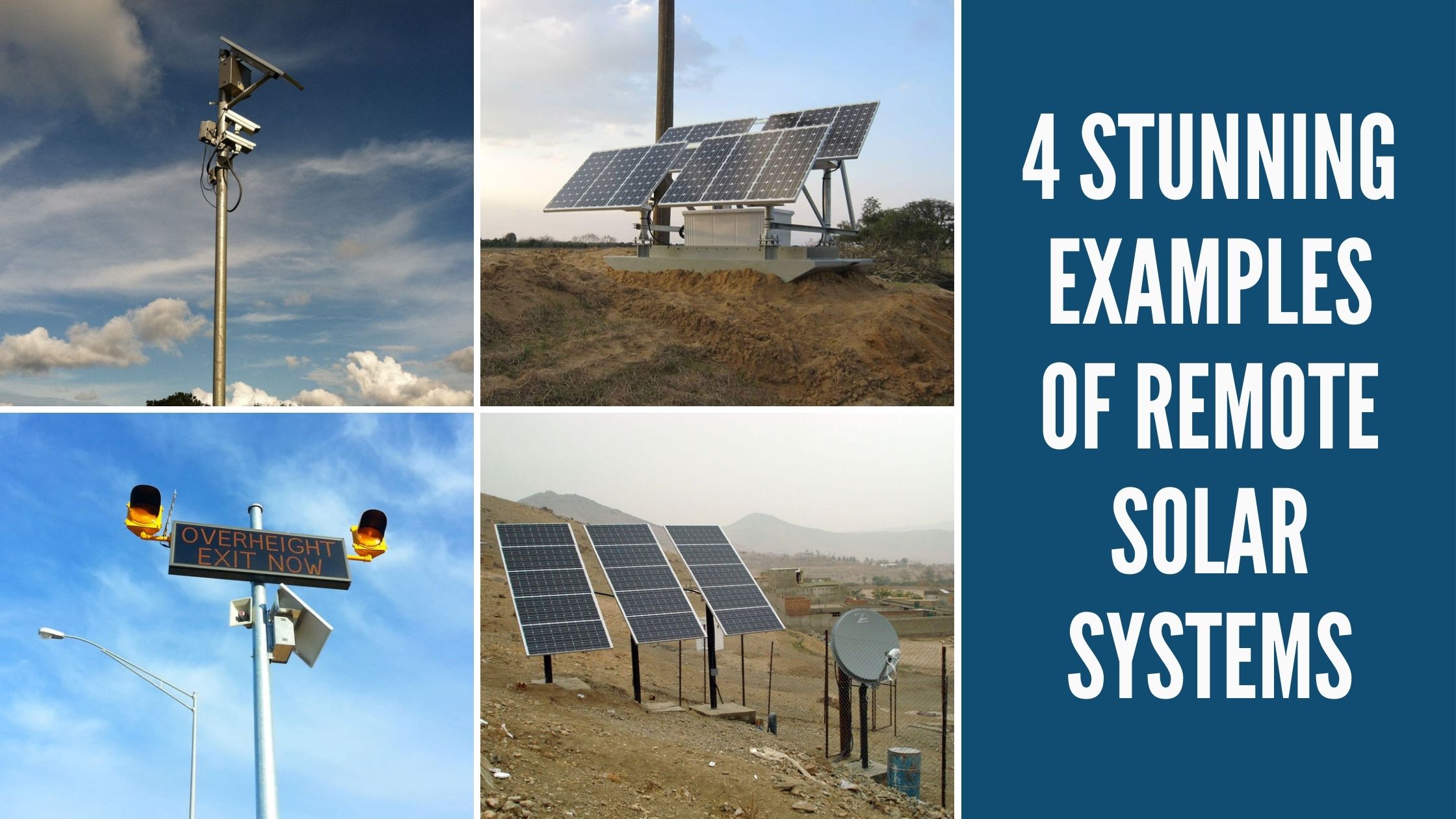


I was driving through the center of the state recently heading north of Orlando and I saw more fields of solar power popping up. This beautiful sea of solar panels was breathtaking – well, at least for someone who likes to see solar.
I also saw some more off-grid solar power systems for other applications as well, most prominently in this area for cameras. This reminded me of all the great ways solar can be utilized, not just for grid power, but for off-grid situations.
Let’s look at four stunning examples of remote solar systems and see how these systems can provide the necessary power for a project in such a beautiful way.
Seismic stations are a spot where a seismic sensor, and possibly a seismic recorder, is installed to collect data about underground activities. These sensors even can transmit the data to a nearby station to allow someone to monitor the activity of an area, especially in a prominent earthquake area.
The seismic stations are typically installed in a very remote area with no access to power. This lack of power is where off-grid solar can fill the gap beautifully.
Understanding the load of the seismic station will help you determine how much solar power will be required. Since these systems require the power to be ultra-reliable, great care should be taken when designing a system.
The solar power system backup should also be sized to have at minimum five days backup, if not much longer, to make sure the system can operate under almost any condition. And making sure the maintenance schedule is followed carefully will ensure there is no downtime with the solar system.
Finally, if the seismic station needs to be moved for any reason, the solar power can easily be moved with the station. Everything can be broken down and moved to the new site, reassembled, and installed, allowing you to get the station back up and running quickly.
Solar power can also provide power to a Wi-Fi power station. Almost 50% of the world lives in a rural area, where internet and electricity are more sparce and not as easily accessible. Solar can provide power to Wi-Fi stations and repeater stations to ensure everyone has access to the internet.
When the world shut down in 2020, SEPCO worked with a local municipality to provide solar power to feed Wi-Fi power stations around the area for all the students having to continue their education at home. This allowed these areas that don’t always have access to reliable internet sources to be able to access their classes online without having to go to a public location.
A typical Wi-Fi station is very low-powered. The further the distance, the stronger the repeater station and the larger the solar power system. Understanding the powered equipment is key to ensuring you install the correct solar power system.
Having a reliable solar power system can also ensure that the customers will not have to deal with glitchy Wi-Fi signals. Having an adequate backup will ensure that the solar will operate as expected no matter what the weather throws at the system.
A vehicle over-height detection system is typically installed in a remote area along a highway. This alerts truckers that there is a low bridge coming up, and if they are too tall, to take a pre-determined detour to avoid collision with the bridge.
These vehicle over-height detection systems ensure the safety of not only the truckers, but the other travelers on the roadway. Suppose the trucker is not alerted to their vehicle needing to take an alternate route. In that case, they can put everyone on the road in danger, causing accidents and weaknesses in the overpass construction.
One system is configured to run the detection system, and further down the road, a separate solar power system will operate the flasher and sign. If the sensor is tripped, everything starts to work to notify the trucker to reroute safely.
Since there is not always power in the nearby area, solar is a wonderful way to power these types of applications. The solar then provides the necessary power to the sensors, alarms, and flashers at their individual locations.
Solar can also provide power to a security camera and other equipment needed to transmit the feed to a security station. Most cameras and electronic equipment are set up to operate directly off DC power provided by a solar power system.
One great showcase of a solar camera project would be a golf course. Golf courses require security for vandalism and trespassing; however, there is little power out on the green. Solar-powered security cameras allows for no damage to the green for installing a security camera system, especially in areas far from a clubhouse or normal security patrols.
Installing a security camera in these vulnerable areas that can transmit the feedback to a central station for onsite security crews allows for extra visibility in these areas for the safety of golfers and homeowners in the nearby area.
As you can see, solar can provide the needed power to various types of off-grid applications where power is unavailable. Solar also costs less to install than trenching the grid power out to a remote site. Want to see how solar can help you with your project? Contact us with your specifications and see how solar can meet your needs.
